Owning a cat is truly a rewarding experience; you get to enjoy all the cuddles and love with some mischief and goofiness sprinkled on top. However, not everyone can enjoy this experience, as there are many people with cat allergies.
In some cases, cat allergies are mild enough, but in the most severe cases, these allergies can even be life-threatening. Of course, many medications help control those allergic reactions, but they are oftentimes not enough to completely eliminate them.
That’s why many people who love (yet are allergic to them) try to find some hypoallergenic breeds. However, despite some claims, there is no cat breed that is really hypoallergenic. There are only cat breeds that are less likely to cause allergic reactions, or when they cause an allergic reaction, it’s usually less severe.
We will list some of those breeds in this article, but let’s first take a look at the reasons for allergic reactions and why there is no hypoallergenic cat breed.
What Causes Cat Allergies
Most people think that a cat’s fur is what causes allergies and that hairless cat breeds are hypoallergenic. However, these allergies are actually caused by a protein named Fel d. This protein comes in 8 variants, and Fel d1 is the most common and dominant cat allergen.
Fel d protein is exuded from the cat’s skin, and every cat exudes it. In other words, there is no cat that doesn’t exude Fel d proteins, which means there is no truly hypoallergenic cat. Of course, some cats exude less Fel d protein than other cats. These cats are usually considered “hypoallergenic,” even though they can still cause an allergic reaction, albeit a very mild one.
“Hypoallergenic” Cats
It is proven that the fur length and thickness aren’t correlated with whether the cat exudes more or less Fel d proteins. This is why you might be surprised by some cat breeds that are proven to be as hypoallergenic as it is possible.
Russian Blue Cat
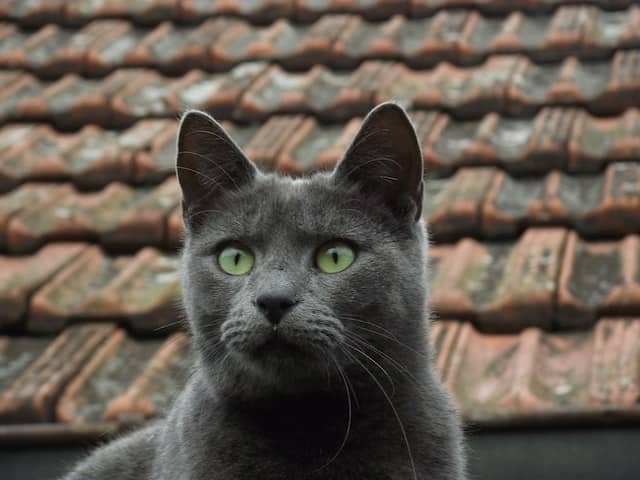
Even though they have lush furs, Russian Blue cats typically produce less Fel d1 than other cat breeds, which makes them as hypoallergenic as one cat breed can be. Russian Blue cats also don’t shed much, which is another reason why they are probably the best choice for people with allergies.
Apart from being good for people with allergies, Russian Blue cats are great pets overall. They are affectionate, loyal, gentle, quiet, and intelligent. They aren’t as active as some other breeds, which makes them perfect for those owners that can’t deal with hyperactive cats.
Of course, describing Russian Blue cats without mentioning their gorgeous looks is unimaginable. These cats have short but thick and double-coated fur that can be silver, charcoal gray, or any other shade of blue-gray. Eyes are always vivid green.
Balinese Cat
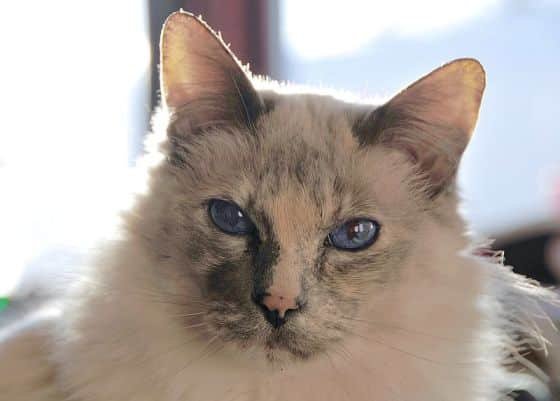
Even though they have medium to long furs, Balinese cats are one of the most “hypoallergenic” breeds. They don’t shed as much as you would expect from a long-haired breed, and they don’t produce as much Fel d1 protein as many other breeds.
They are also great pets, as they are friendly, curious, intelligent, communicative, and outgoing. Balinese cats have fur in a color point pattern, which means their heads, legs, and tails are much darker than the rest of their bodies. Their eyes come in various shades of blue.
Sphynx Cat
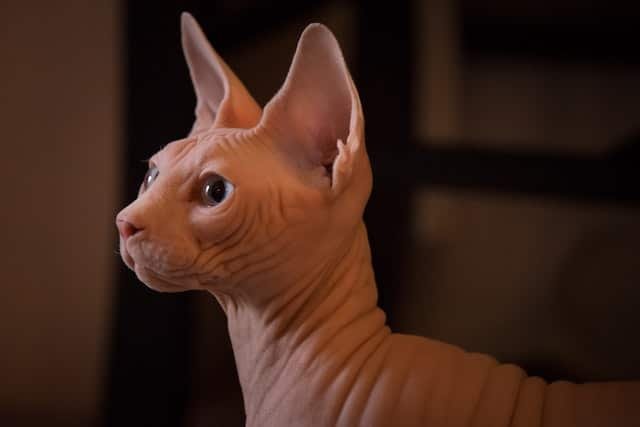
This one is a pretty obvious choice, as Sphynx cats have no fur which they could shed. Additionally, they don’t produce as much Fel d1 protein as some other cat breeds.
Still, Sphynx’s skin can become oily over time, so it is important to bathe these cats often enough. Not only will this keep their skin healthy, but it will also reduce the possibility of triggering allergic reactions.
If this sounds like a lot of work, it is worth it. Apart from Sphynx cats looking absolutely gorgeous, they are also great pets. They are known to be playful, loyal, energetic, curious, affectionate, and friendly.
Javanese Cat
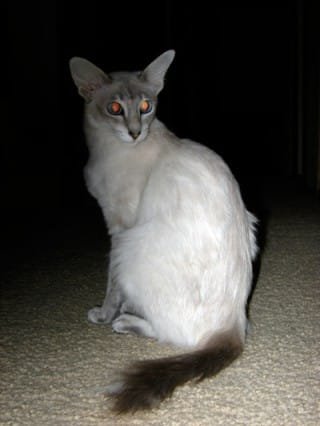
Javanese cats don’t have undercoats, which makes their fur sparse, and less prone to tangling and shedding. They also don’t produce as much Fel d1, which makes them less allergenic than other cat breeds.
These cats are intelligent, communicative, intelligent, easy to train, and affectionate. They have long, silky furs that can be of various pale colors, and their fur pattern is the color point. Javanese cats have deep blue eyes.
Ocicat Cat
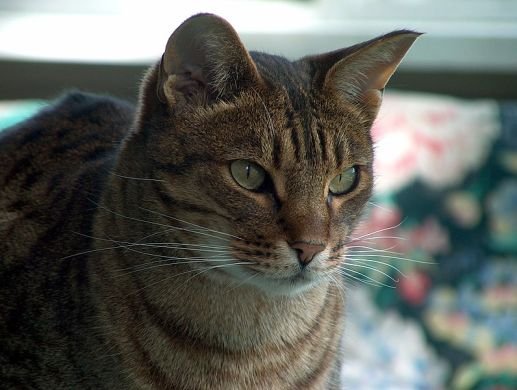
Resembling wild ocelot cats, this breed certainly has unique looks with its unusual spotted fur. Ocicats also don’t shed as much, and their skin doesn’t produce as much Fel d1 protein as many other cat breeds. This makes them one of the allergy-friendly cat breeds.
Ocicats are outgoing, friendly, communicative, active, gentle, loving, and affectionate. Apart from spotted furs, Ocicats have tufted ears and large eyes that can be of any color except blue.
Burmese Cat
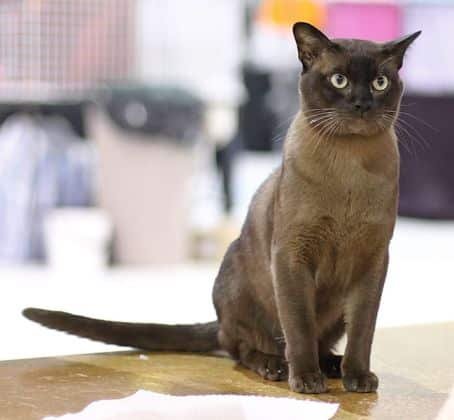
Burmese cats have shorter coats, and they produce less Fel d1, which makes them one of the most hypoallergenic cat breeds.
These cats are extremely intelligent, playful, curious, loving, devoted, and determined. Burmese cats have beautiful, glossy, and satin-like fur that can be sable, blue, platinum, or champagne.
Siberian Cat
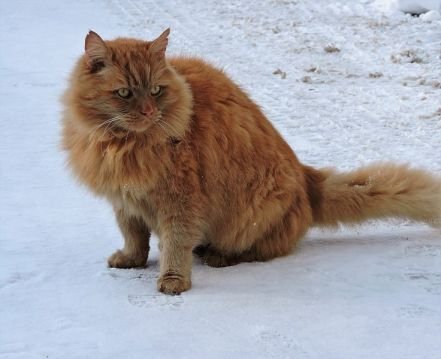
The Siberian cat breed is considered one of the least allergenic cats because of its below-average Fel d1 levels in saliva. Even though they have moderately long coats, people with cat allergies usually experience mild to no reactions when around Siberian cats.
Siberian cats are playful, affectionate, easy to handle, intelligent, and active, and they are fascinated with water. They have long, thick, and triple-coated furs, which can be of any color and pattern. Eyes are large, almost round, and can be of any color.
Oriental Shorthair Cat
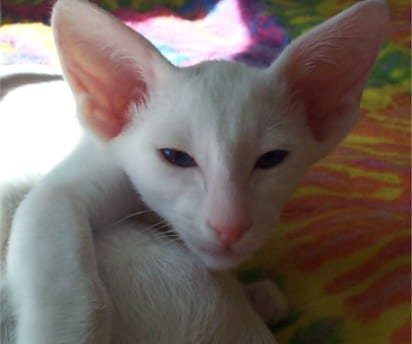
These cats are considered almost nonallergenic, especially when they are regularly groomed. Regular grooming reduces shedding and dander, both of which are known to trigger allergic reactions.
Oriental Shorthairs are playful, curious, active, and energetic cats that are natural entertainers. They crave attention and can’t be left alone for too long. Their fur can be short or long, and it comes in over 300 color and pattern combinations. Eyes are green, and ears are unusually large.
Cornish Rex Cat
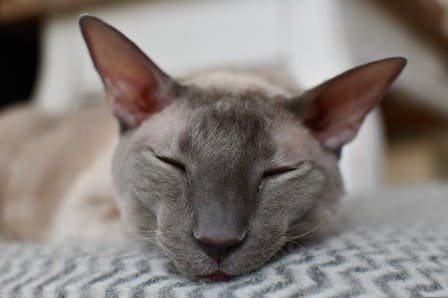
Cornish Rex cats have soft, curly, and sparse furs that shed quite rarely. As such, they are among those cat breeds that cause little or milder allergic reactions than most other breeds.
Cornish Rex cats are active, energetic, playful, curious, friendly, and intelligent. Their curly furs and large ears are the most distinctive physical attributes. Eyes are oval-shaped, and they can look larger than they are because the head is so small. Eye color depends on the fur color.
Due to their unique appearance, Cornish Rex cats are often compared to Greyhound dogs.
Devon Rex Cat
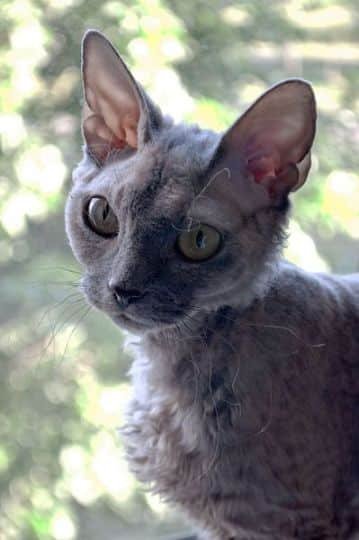
This is another cat breed with curly fur and hilariously large ears. This cat breed is often compared to elves, pixies, and even aliens due to its unique appearance. The coat is not as sparse as in Cornish Rex cats, and it can come in all color-pattern combinations.
Devon Rex’s eyes are large, widely set apart, and can be of any color. The ears are even larger than in Cornish Rex cats, and they are often covered in tufts and/or earmuffs. Their personalities are just as interesting as Devon Rex cats are playful, cuddly, affectionate, loving, playful, and loyal.
Their fur doesn’t shed much, which significantly reduces the possibility of allergic reactions. Devon Rex owners should be diligent when grooming, though, as Devon Rex’s paws can become dirty due to the oil buildup, which can increase the possibility of allergic reactions.
Bengal Cat
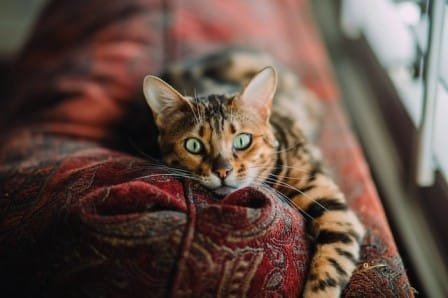
This is another cat breed that doesn’t shed as much as many other cat breeds. As a result, Bengal cats are a great choice for those that suffer from mild cat allergies.
They are active, playful, curious, sociable, loving, loyal, sweet, and affectionate. Another appealing feature of Bengal cats is certainly their physical appearance. They look like mini versions of wild cats.
Their fur is covered in dark spots or rosettes, which makes Bengal cats look like mini leopards. Bengal’s eyes are also distinct and breathtaking, and they can come in various colors. Due to their body proportions which include long legs and tails, Bengal cats are truly exotic-looking animals!
Siamese Cat
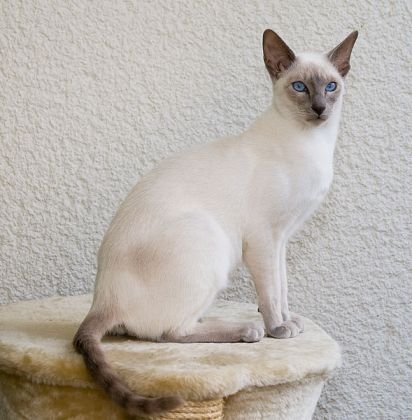
Apart from being one of the most popular cat breeds. Siamese cats are also almost hypoallergenic. They don’t shed a lot, which is great for people with allergies.
Siamese cats are vocal, friendly, outgoing, communicative, outgoing, friendly, intelligent, curious, and active. Some people say Siamese cats are attention-seeking and clingy, but we don’t think that’s bad!
These cats are also true beauties, with short and glossy furs that can come in various colors, including blue, seal, chocolate, and lilac point. The pattern of their furs is the color point, which makes these cats even more beautiful. Another striking feature of Siamese cats is their vividly blue eyes.
Which Cat Breeds To Avoid If You Have a Cat Allergy
While there are almost hypoallergenic cat breeds, and as such, they are good for people with cat allergies, there are also cat breeds that are complete opposites. Those breeds are best to avoid if you have cat allergies.
Their furs are long and thick, and they shed a lot. Frequent and intense shedding is known to trigger strong allergic reactions. Some of the breeds that are bad for your allergies are Maine Coon, Persian, Himalayan, Manx, Cymric, and the Norwegian Forest Cat.
Signs That You Have a Cat Allergy
Many people are allergic to cats without even knowing it. This happens when they don’t connect their allergy symptoms with the presence of their beloved pets. Some symptoms are mild and easily manageable, while others are more severe and can even be life-threatening.
That’s why it is so important that you get familiar with these symptoms so that you can recognize and manage them:
- Runny or stuffy nose
- Frequent sneezing
- Facial pain
- Itchy, water, and/or red eyes
- Hives and skin rash
- Coughing
- Shortness of breath
- Wheezing
- Chest tightness
- Struggling to breathe
These are the most common symptoms of cat allergies, and if you notice any of them, you should consult your doctor, no matter how mild those symptoms are.
Cat Allergy Management Tips
Fortunately, there are some tips that will help you manage your cat allergy. With these tips, you will be able to keep your allergies as mild as possible and maybe even make them go away!
- When getting a new cat, choose one of the cat breeds that we listed above. Finding a “hypoallergenic” cat breed will ensure that you won’t be surrounded by allergens.
- Another important thing is regular grooming. If you brush and bathe your cat on a regular basis, you will reduce the amount of dander and shedding. As a result, you will be exposed to fewer allergens, and your allergic reactions will be brought to their minimum.
- Vacuum your home frequently. This will help remove cant’s dander and hairs from your carpets and floors. It would be best if you used a vacuum cleaner that has special filters that can capture even the tiniest particles of cat’s dander.
- Wash your cat’s toys and bedding at least once a week in hot water.
- Use air purifiers with HEPA (high-efficiency particulate air) filters, especially in rooms where your cat spends most of its day.
- Install hardwood floors instead of carpets, as they are known to trap fewer allergens than carpets.
- If you haven’t already, install the air-conditioning system. This will allow you to keep your windows closed, which in turn prevents pollen, dust, and other allergens from entering your home. Although unrelated to cat allergies, these allergens can make your cat allergy more intense and harder to manage.
- Talk to your doctor. They might be able to give you an anti-allergy shot or prescribe you some medications that will reduce or eliminate allergy symptoms.
- Finally, if nothing works, you should consider getting another pet. While your love for cats might be strong, you still need to put your health first place. After all, if you are struggling with strong allergic reactions every time you are close to your cat, it is an unpleasant and even dangerous situation for both of you!
Summary
Cat allergies can be quite annoying and even dangerous. They can prevent you from enjoying your cat’s company and can significantly reduce your life quality. That’s why it is so important to consider getting a cat breed that’s “hypoallergenic.”
There is no such thing as a completely hypoallergenic cat because all cats exude Fel d allergens. However, there are cats that exude fewer allergens, and they are the best choices for people that are allergic to cats.
Of course, even if you can find a “hypoallergenic” cat, you need to be aware of how strong your allergy is. If it is severe and life-threatening, the best option is to avoid getting a cat at all!
